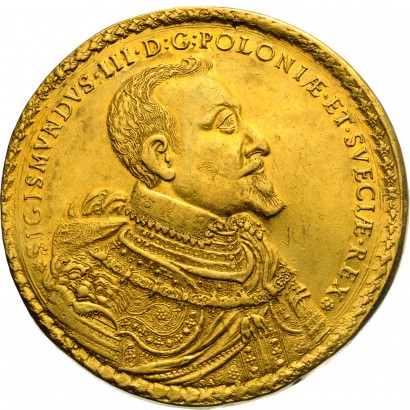Priceless exhibits from Hungarian national collections – testimony to the long-standing relations between Poland and Hungary – will be on display at the Royal Łazienki Museum from 7 May to 6 August 2019.
The exhibition "History shared by the brothers. Unique pieces from the Budapest collections" will be available to see in the Officer Cadets School (Tuesday–Sunday, 10.00–18.00). Entry: PLN 10 – normal ticket, PLN 5 – reduced price.
Priceless Exhibits
The exhibition presents the tale of the almost one thousand-years-long relations between Poland and Hungary. The history of these relations is portrayed by priceless exhibits from leading Hungarian institutions – in particular, the Hungarian National Museum, the National Archives of Hungary, and the Military History Institute and Museum of the Ministry of Defence in Budapest. In addition to unique historic and artistic value – due to their relation to iconic personalities for both nations – these items carry an immense emotional weight. Visitors will have a chance to see exhibits connected with Stephen Báthory, who came from Transylvania and went on to become the architect of the military power of the Polish-Lithuanian Commonwealth, or Józef Bem – one of the greatest national heroes of Hungary.
Among the most interesting exhibits is one of the rarest and most valuable coins in the world – 100 ducats in gold of Sigismund III Vasa, from the National Museum in Budapest. Another exhibit from this institution is the ceremonial sword gifted by Pope Julius II to King Vladislaus II of Hungary – a prime specimen of the military craft of High Renaissance. The Hungarian National Museum has also provided various weapons from 16th and 17th century, including a karabela sabre, which belonged to King John III Sobieski.
Polish-Hungarian Relations
Poles and Hungarians have long emphasized their centuries-old friendship and – in particular – the selfless mutual support that the nations exchanged during their respective dramatic struggles for independence. Across centuries, there have been conflicts connected with the rivalry for influence in our part of Europe, but those tended to be short-lived, and the memory of common history endured even when both nations were in hostile camps.
Poles took part in the Hungarian revolutions of 1848-1849. They were led by General Józef Bem, and for his heroic liberation of Transylvania, Hungarian women gifted him a richly-adorned ceremonial sabre. Hungarians came to Poland’s aid in 1920, when the Red Army was approaching Warsaw. On the eve of the deciding battle, the Polish Army was supplied with some tens of millions of rifle ammunition. During World War II, the Hungarian government remained neutral and staunchly refused to aid Germany, which, in 1939, was preparing to invade Poland. After the Invasion of Poland, tens of thousands of Polish soldiers found refuge in Hungary. During the Warsaw Uprising, Hungarian soldiers armed Polish insurgents, and Polish troops could move freely on lands controlled by Hungary.
In return for Hungary’s neutrality during World War II, in 1956, Poles took mass efforts in Polish cities and demonstrated solidarity with the revolutionaries fighting against the communist regime and the Soviet Army in Budapest. Poles offered the most support to Hungary, by donating blood, buying medicine and organizing fundraisers.
The exhibition "History shared by the brothers. Unique pieces from the Budapest collections" has received funding from the "Niepodległa" Multi-Annual Programme for 2017–2022. It is accompanied by a rich educational programme: tours, conferences, picnic and events for families.
